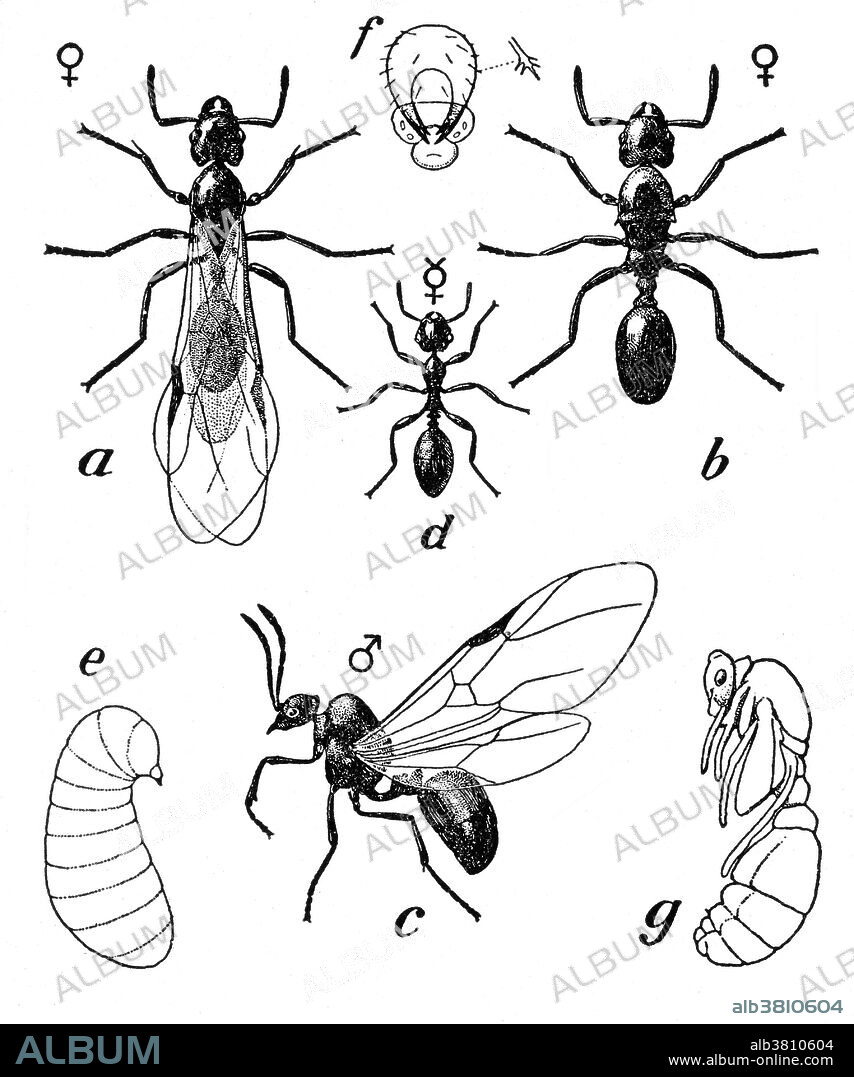alb3810604
Pavement Ant (Tetramorium caespitum)

|
Zu einem anderen Lightbox hinzufügen |
|
Zu einem anderen Lightbox hinzufügen |



Haben Sie bereits ein Konto? Anmelden
Sie haben kein Konto? Registrieren
Dieses Bild kaufen

Titel:
Pavement Ant (Tetramorium caespitum)
Untertitel:
Siehe automatische Übersetzung
Diagram of the pavement ant. (a = female; b = female after loss of wings; c = male, d = worker, e = larva; g = pupa; f = head of larva. The pavement ant, Tetramorium caespitum, is a common household pest. Its name comes from the fact that colonies usually make their homes in pavement. It is distinguished by one spine on the back, two nodes on the petiole, and grooves on the head and thorax. The species is native to Europe, but was introduced to North America in the 18th century. Insects are a class of invertebrates within the arthropod phylum that have a chitinous exoskeleton, a three-part body (head, thorax and abdomen), three pairs of jointed legs, compound eyes and one pair of antennae. They are among the most diverse groups of animals on the planet, including more than a million described species and representing more than half of all known living organisms.
Bildnachweis:
Album / Science Source / New York Public Library
Freigaben (Releases):
Model: Nein - Eigentum: Nein
Rechtefragen?
Rechtefragen?
Bildgröße:
3600 x 4316 px | 44.5 MB
Druckgröße:
30.5 x 36.5 cm | 12.0 x 14.4 in (300 dpi)
Schlüsselwörter:
AMEISE • BIOLOGIE • ENTOMOLOGIE • FAUNA • ILLUSTRATION • ILLUSTRATIONS • INSEKT • INSEKTEN • ZOOLOGIE
 Pinterest
Pinterest Twitter
Twitter Facebook
Facebook Link kopieren
Link kopieren Email
Email
